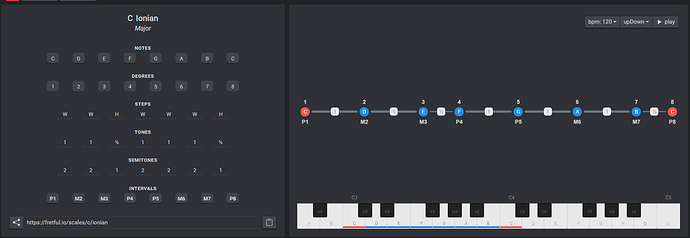Having a little trouble keeping the difference straight. E string G, A string B, and A string D would be major, if I change the A string B to B flat and leave the other two notes alone it becomes minor. Yes/no?
Yes, it becomes minor.
Ok so for any root, third, fifth triad if the third is flat it’s a minor?
Yes, the 3rd determines if it’s minor or major.
Note: I assume you mean if the 3rd is flatted(compared to what it is as a major chord) rather than if it’s just a flat note. I was just using your example in the first post. To explain: for a G major chord it will be G B D. For a G minor chord, the 3rd will be flatted, so it becomes G bB D.
If the latter, that depends on the key because there are some keys/chords which have flat notes.
What about a 1 5 6. That would be major, 1 4 6 would make it minor?
6th and 4th aren’t chord tones. If there is no 3rd then you won’t know if it’s major or minor.
The third doesn’t have to be “flat” - the interval from the root to the third has to be a minor third for it to be part of a minor triad or chord.
So, D - F is a minor third. The major third would be D - F#
So the major/minor has to have a third?
Yes, it is that interval of a third (note: the interval, not one note alone) that defines the “feel” of major or minor 
When you have chords without a third (e.g., a sus4 chord), they are “undefined” with respect to major/minor, which often also means you have more options to play over that chord.
Actually, 1, 4, 6b would be a minor note progression. But not a minor triad.
You can think of the minor scale in relation to the major scale as:
1, 2, 3b, 4, 5, 6b, 7b
Playing notes at those intervals is playing in a minor scale for a given root note.
Haha, yes, but I didn’t want to go there… could be too much information for one setting ![]()
Yep, but as it happens
1, 2, b3, 4, 5, 6, b7 and
1, b2, b3, 4, 5, b6, b7 and even
1, b2, b3, 4, b5, b6, b7
are all also minor scales, but what they have in common is - indeed - the b3 (minor third)!
Ok sure, I should have said “natural minor” or “Aeolian” 
Oh sure @howard bring modes into the equation.
That should clear things up for beginners reading this ![]()
I am consistently confused between major/minor chords and chords that make up a progression in a given key
Edit: i dont ‘get’ why a major key has minor chords
Why is it called natural minor again? Is it just to differentiate from other minor scales or does it have anything more to it?
But why is a natural minor a separate scale and not just a mode?
Naturally… ![]()
Well, essentially those chords are created with the notes available to them on a given scale.
Take the major scale, for instance:
Starting with C, if we add a 3rd and a 5th we get C E G.
Going to D, we will find the 3rd and the 5th available to it. Apply the same pattern. Skip 1 note between the notes you’re “taking”
We can see that the F is 1,5 tones away from D. That makes it a minor third unlike the E to C which is 2 tones apart which makes it a major third.
And you do that for every tone on a scale to derive the main chords. Of course there’s a lot more to it. It’s a big rabbit hole. But essentially it’s this simple.
These are a bunch of chords derived from the major scale:
Ignore the fainted ones for now as they don’t respect the chord function by using enharmonics
It is “just” a mode (called the Aeolian as @howard mentioned). But one very famous :p. The Major scale is also the Ionian mode, also very famous
Right. The natural minor scale (called that to separate it from the harmonic and melodic minor scales, IIRC) is simply the sixth mode of the corresponding major scale, “Aeolian mode”.
Put another way, the key of A minor is the Aeolian mode of the C major scale.
Yep. When you think of scales, all that really matters are the intervals between the notes. And that’s how the intervals line up for triads built from major scale intervals. To keep it all diatonic, the triads built from different interval positions in the scale need to sometimes be major and sometimes be minor, depending on interval position.
There is a corresponding (and different) progression in the minor scale too, because all the minor scale really is is a set of intervals as well.
And the same is true of every other mode, but let’s not go there.



